While Japanese cuisine is delicious, it’s also a fascinating peek into the country’s culture. As these culinary traditions have been followed for centuries, they’ve landed a spot on the UNESCO Intangible Cultural Heritage list.
The way food is prepared with impeccable care and presented in a beautiful yet simplistic way speaks volumes about Japanese culture. People there take great pride in their work, and it’s shown through the way they prepare their foods.
Japanese Food Preparation
In Japan, many ingredients are selected for the seasons. This ensures maximum freshness and enjoyment, something people have done there for generations.
You’l likely notice that Japanese food is presented to you in small portions that almost look too delicate to eat. Indeed, this is the case with everything, from sushi to noodles.
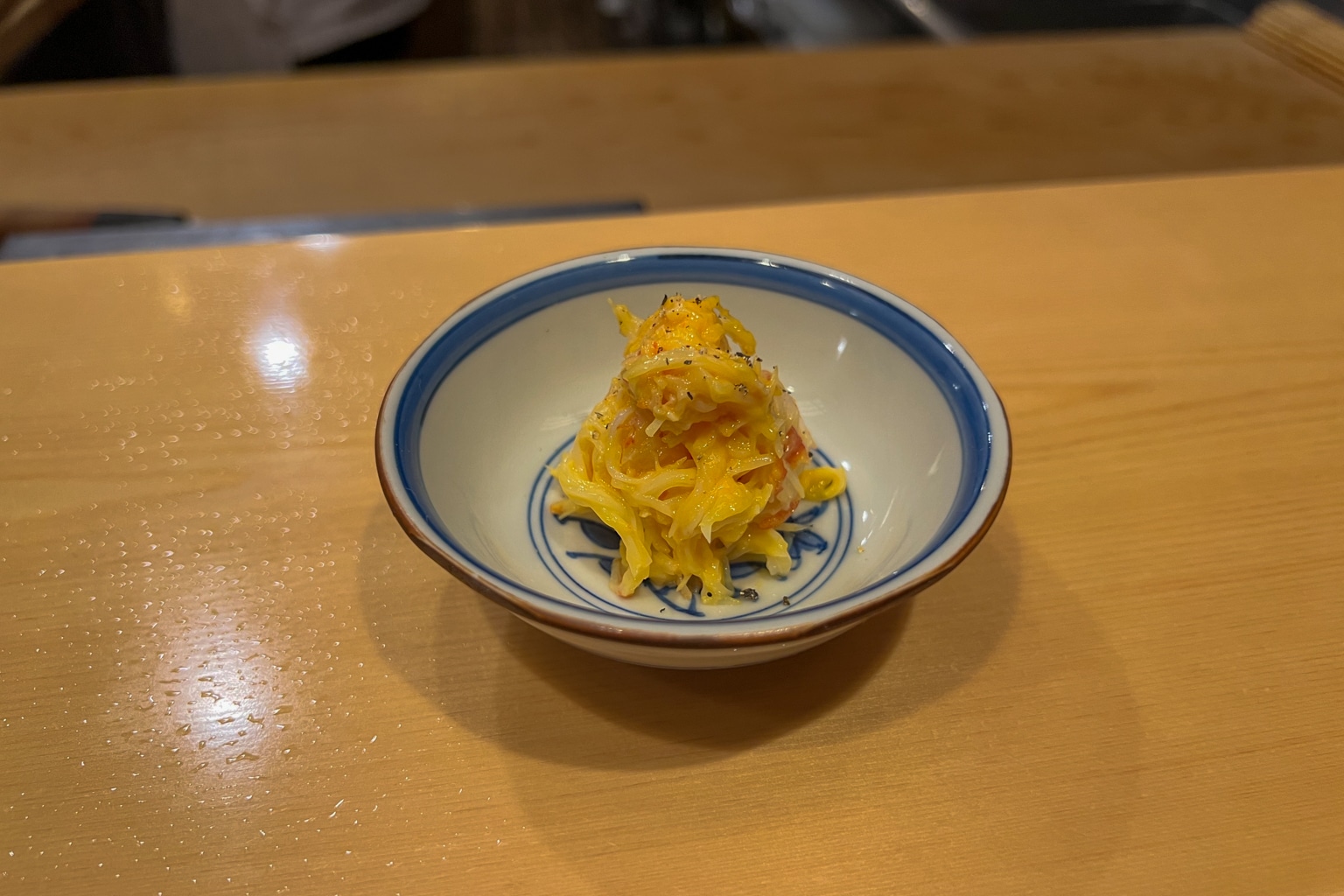
However, this is done to provide a carefully balanced selection of flavours. They’re less indulgent and more mindful, inviting you to slow down and savour all the varieties of tastes in your meal.
If you’re walking down a street in Japan, you’ll likely notice vibrant displays of dishes outside of a restaurant. These wax or plastic renderings are meant to give you an idea of what to expect inside the restaurant.
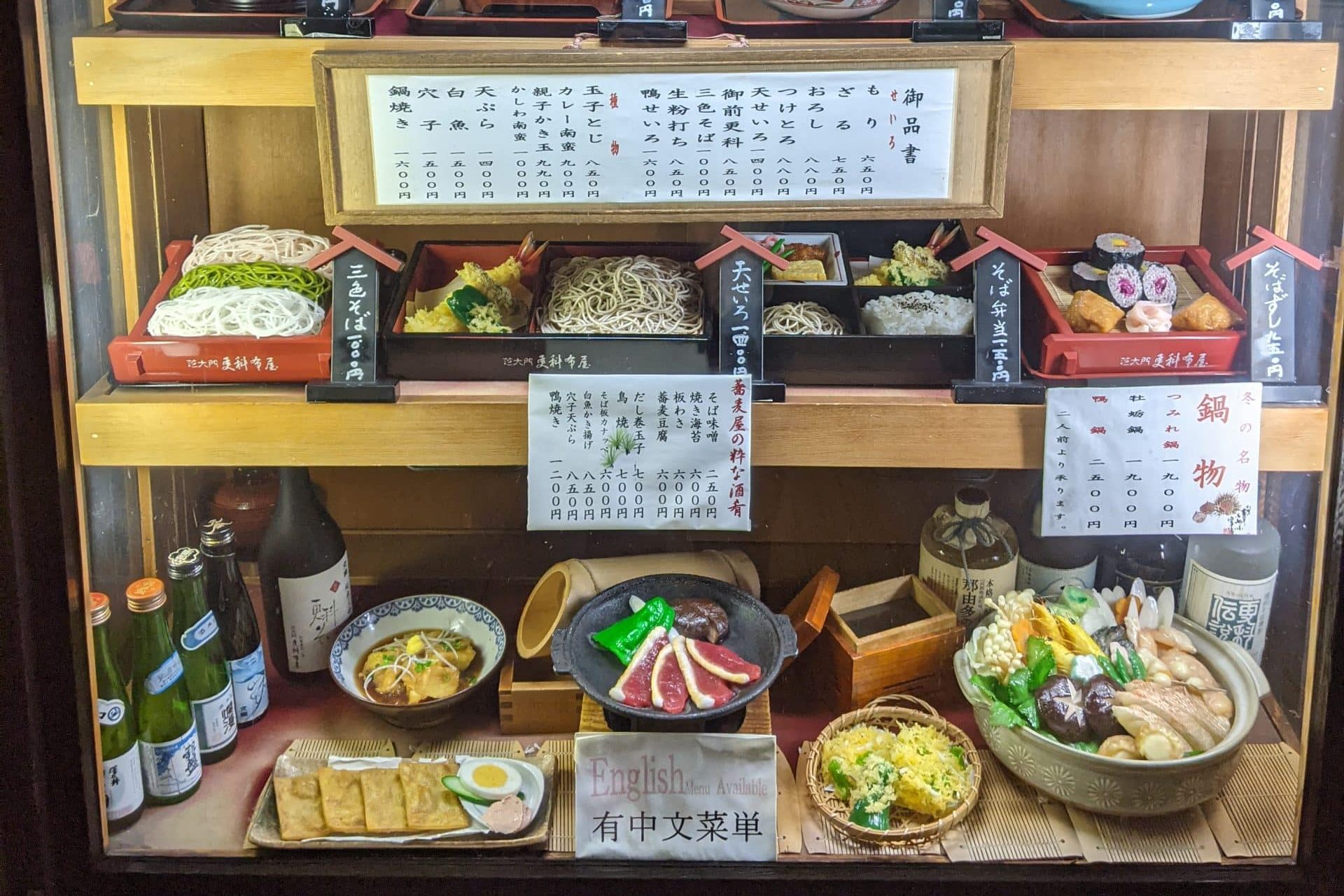
There is quite an art behind these displays, and some are more convincing than others. The best ones make it hard to tell the difference between what’s real and what’s fake.
Culture and Etiquette in Japan
With a culture that revolves around intricate food creations, you might wonder how you can express your enjoyment and appreciation. While in other parts of the world slurping noodles may seem strange, in Japan, it’s very much encouraged.
You’ll be in good company, as everyone else will be doing it too, so don’t be shy to do as the locals do.
At the end of your meal, make sure you set your chopsticks at the edge of your rice bowl or on the provided chopstick block. Never stand them upright into a bowl of rice, as this is deemed both offensive and unlucky.
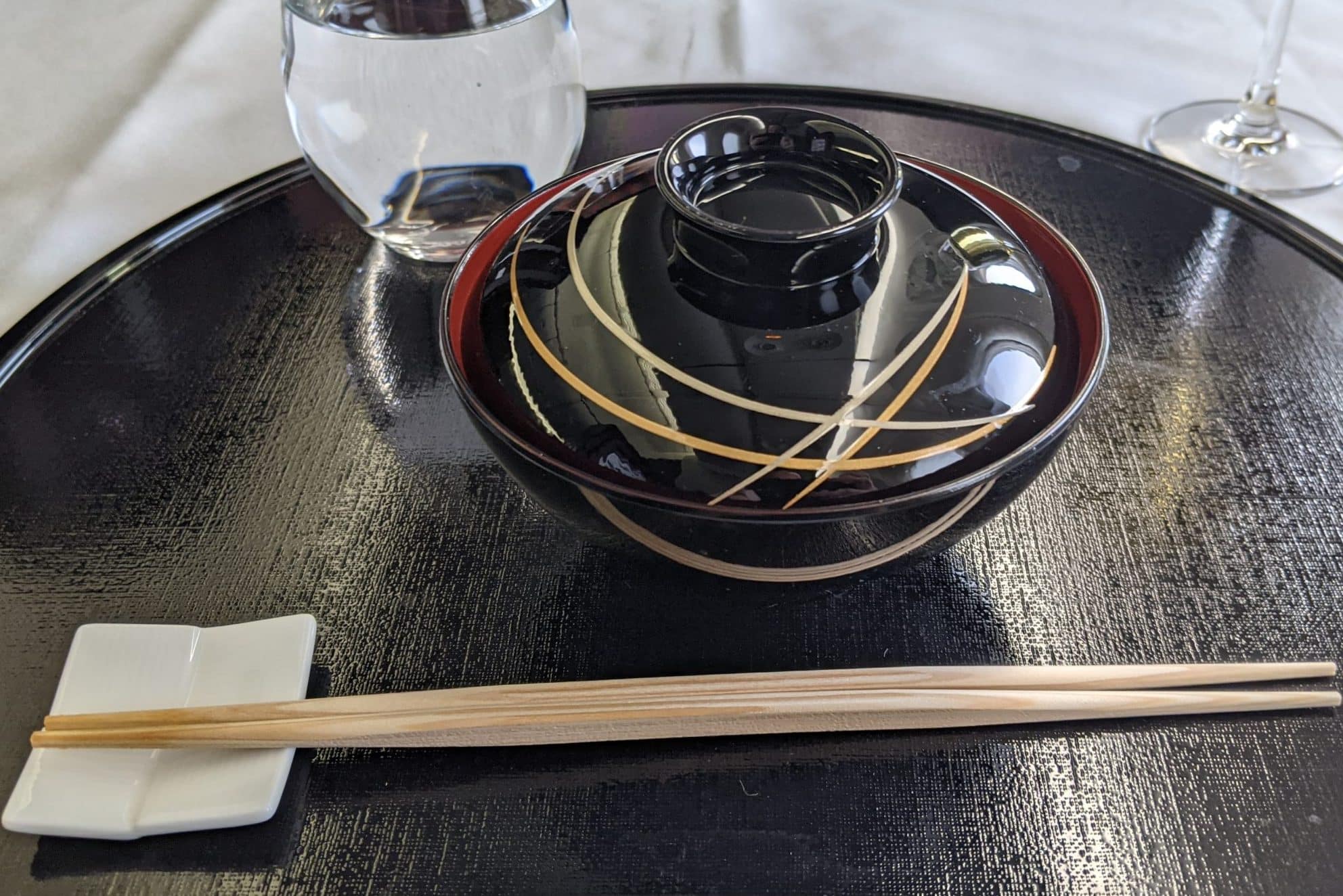
And perhaps the most important rule to follow while dining in Japan is to never pass food with your chopsticks. It’s considered morbid as it reminds Japanese people of the funeral ritual of passing cremated bones.
Common Foods to Try in Japan
Here are the most common and delicious foods in Japan. Try them and you’ll be tasting a part of the history and culture in every bite.
Sushi
We’ll start with the most famous dish from Japanese cuisine. These artfully prepared and presented dishes are made with vinegared sushi rice and an array of raw fish ingredients.
Generally speaking, this will include tuna (maguro), salmon (harasu), yellowtail (hamachi), freshwater eel (unagi), and mackerel (saba).
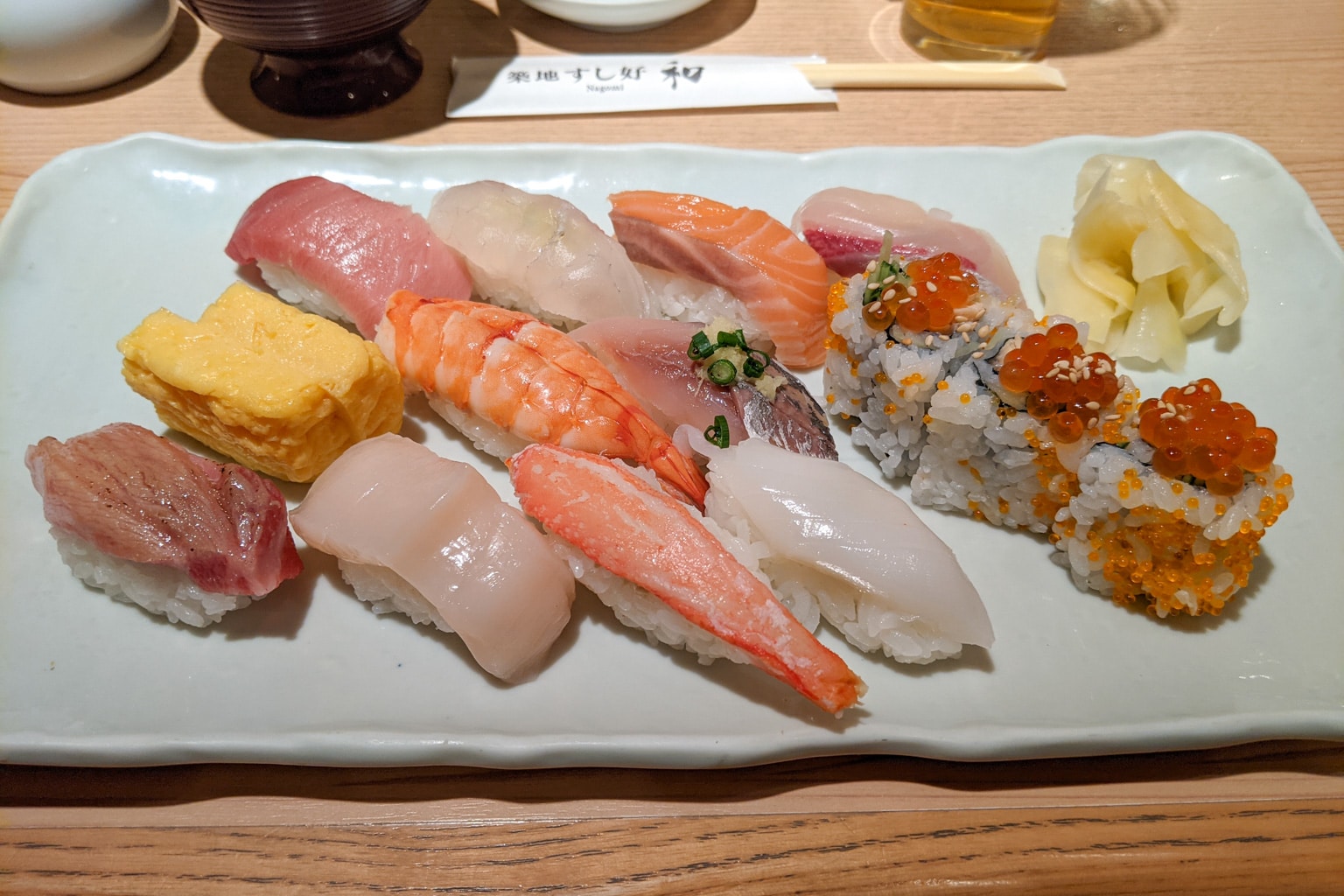
You’ll find it served with pickled ginger, wasabi, and soy sauce. Sushi is most commonly found as rolls (maki) and rice balls topped with fish slices (nigiri). If you’ve ever been to a Japanese restaurant outside of Japan, you will be familiar with these items.
Omakase
Omakase isn’t exactly a dish, but rather a complete dining experience. It basically translates to mean “I’ll leave it up to you”. When you order omakase, you’re granting the chef permission to make your food from whatever is fresh.
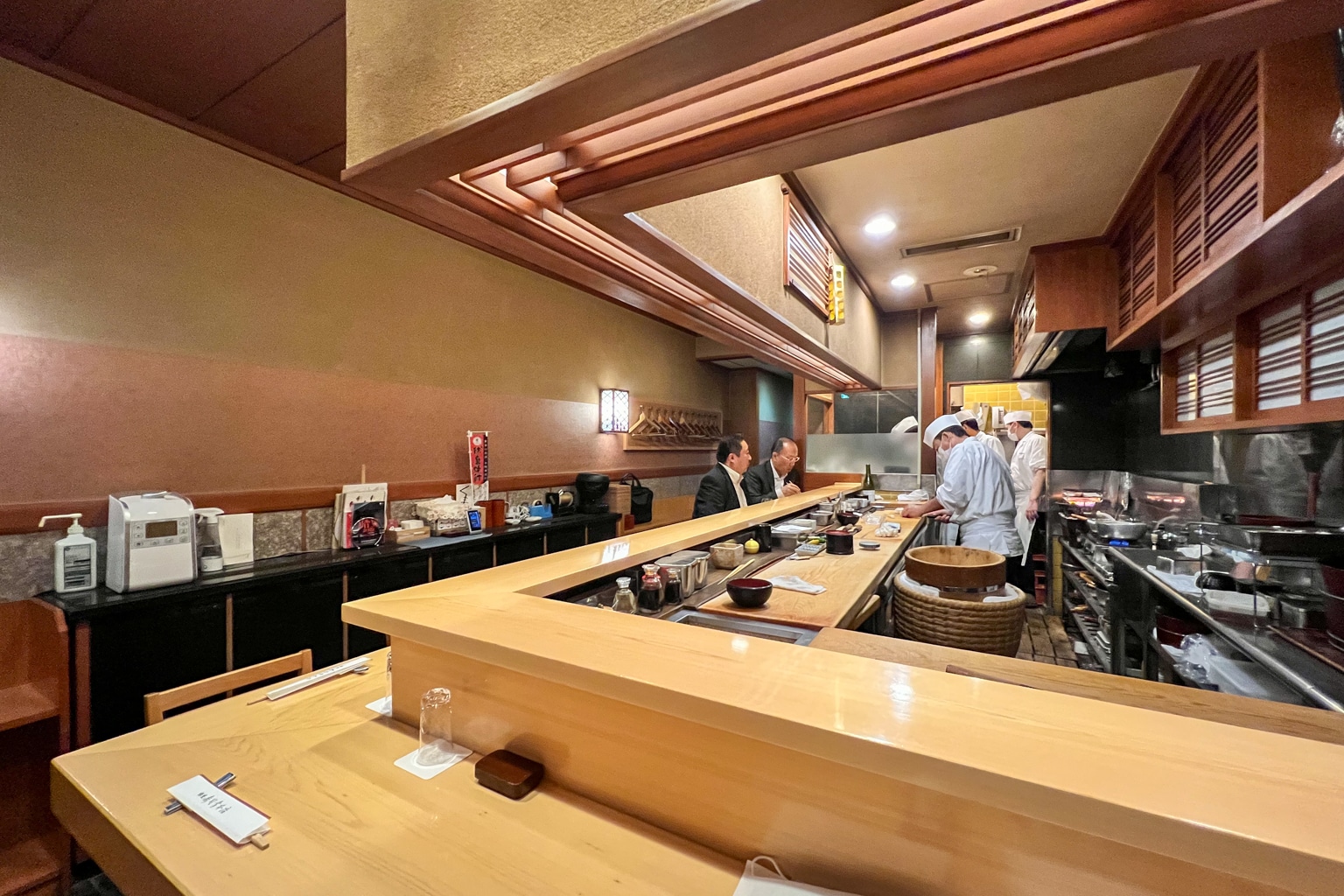
This is only seen in sushi restaurants when you sit at the bar, near the chef if you can. It’s an incredible experience that lets the chef craft incredible sushi for you.
However, if you have dietary restrictions or you’re on the picky side, you may want to skip this. If not, let your adventurous palate enjoy the incredible delights!
Sashimi
While sushi involves rice and raw fish, sashimi merely involves raw fish, seafood, or even meat. If you’re in the mood for something light, sashimi is the way to go.
It will come with soy sauce and wasabi as well, but no rice.
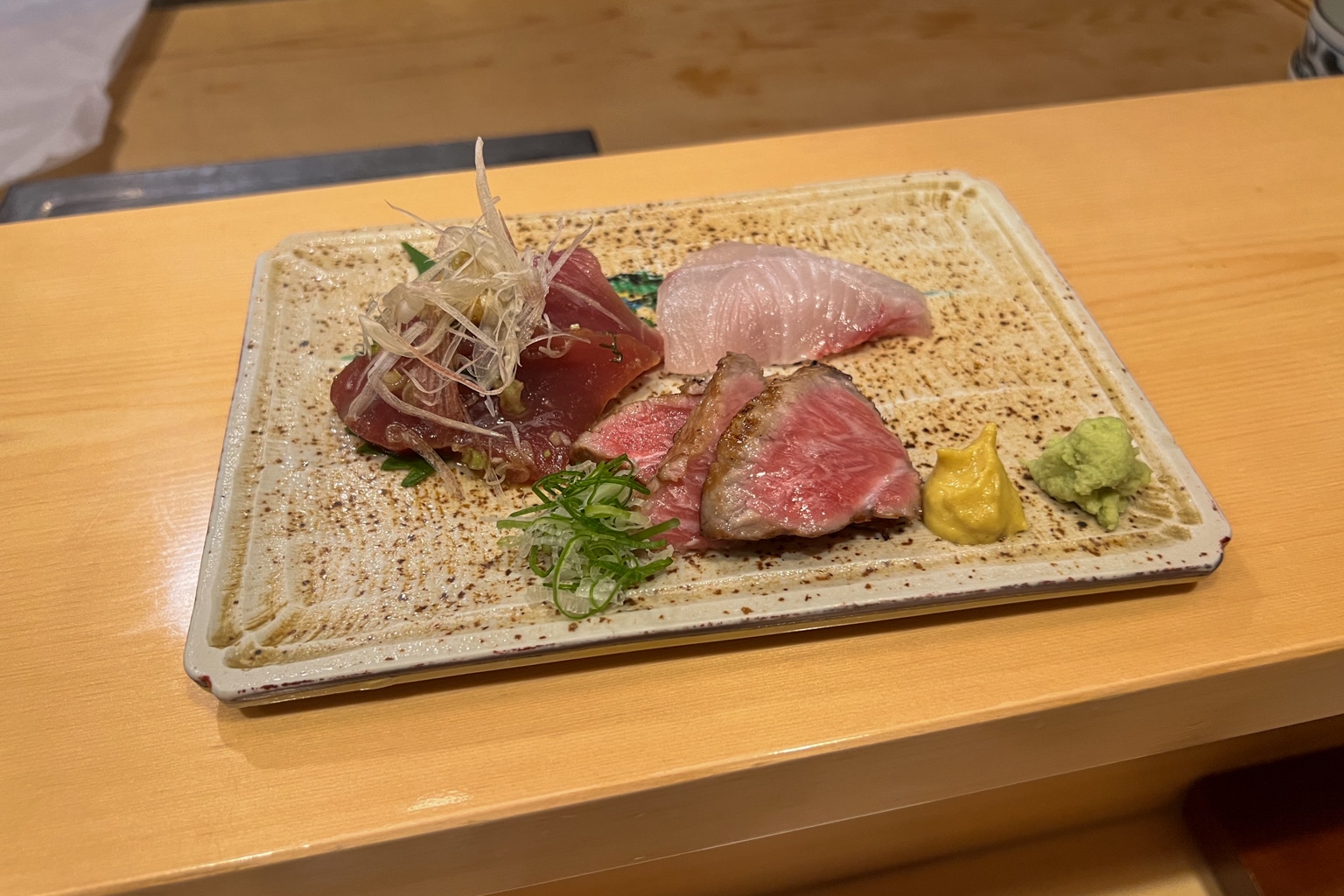
Interestingly, it’s possible to find chicken sashimi in Japan. It’s made from a special breed called the blue foot chicken.
The risk for salmonella is much lower, though due to the health concerns, Japan requires restaurants to obtain a special licence in order to serve raw chicken.
Ramen
Forget about the ramen you know from supermarket shelves. The stuff in Japan is made with a wonderful broth and something called tare or kaeshi, a special concentrated seasoning. This is what determines the ramen style – miso, shio, shoyu, or tonkotsu.
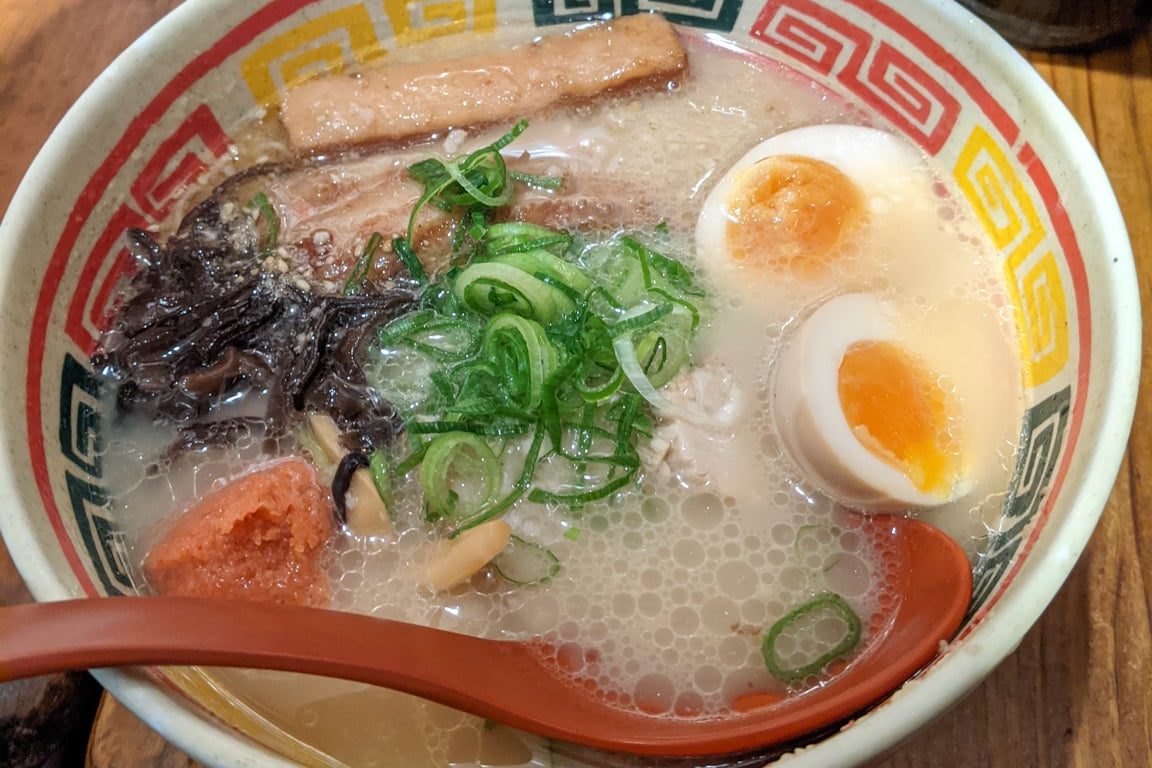
While there might be four main styles, there are endless variations of each. In fact, there are so many kinds of Japanese ramen flavours that can be tasted, it will blow your mind.
Toppings will vary, but can include thin slices of braised pork belly (chashu), seaweed (nori), scallions, bean sprouts, bamboo shoots, and egg. For every type of ramen you see in Japan, you’ll want to give it a try to experience ramen culture.
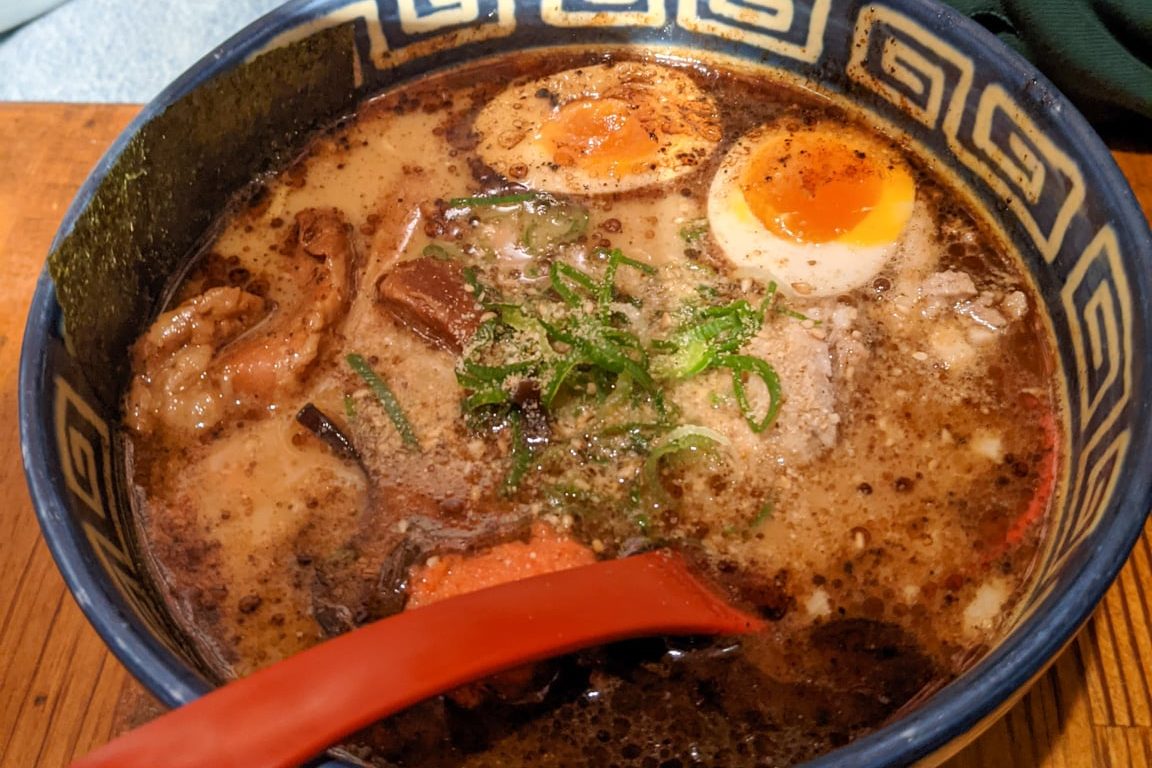
With so many options, you will have a hard time deciding which one is your favourite.
Udon
Udon is a type of noodle made from wheat flour. It’s thicker than ramen noodles, and can be served in many different ways.
You’ll often find udon served in a broth alongside some toppings, such as meat, scallions, and seaweed. Udon is also served fried, or in a bowl without broth.
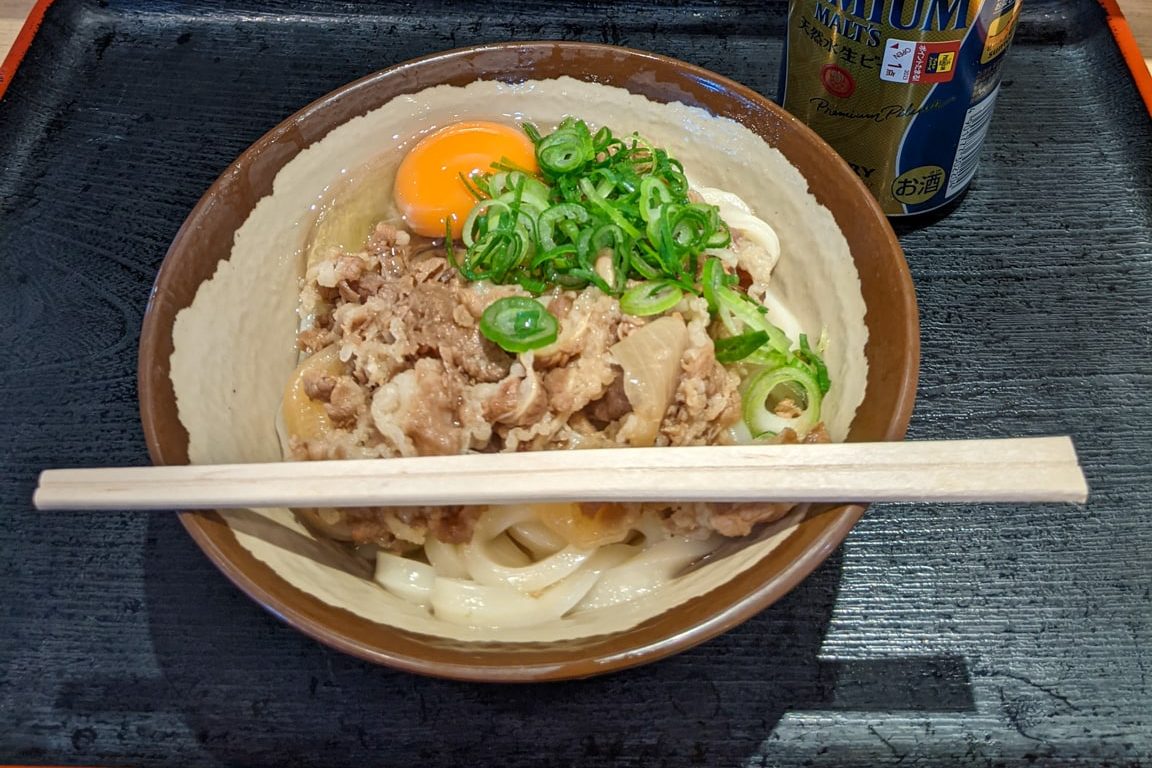
Udon is served throughout the day. Give it a try first thing in the morning for a nice way to start the day.
Soba
Soba noodles are made from buckwheat flour. You can easily tell the difference between soba noodles and other types of noodles, as they have a slightly brown tinge and are about the same size as spaghetti.
Soba noodles can be served in a broth alongside other toppings, but most commonly, they’re served cold with a dipping sauce.

Soba noodles are everywhere in Japan. If you’re looking for a quick snack, keep an eye out for a tray of soba noodles with a dipping sauce at the grocery store.
Tempura
If you like fried foods, you’ll love tempura. This deep-frying method is completely different from what you’re used to, because the foods, which are typically vegetables or seafood, are coated in a light batter for crispy and fluffy results that don’t feel heavy.

It comes with a savoury dipping sauce that elevates the experience even further.
Wagyu
Japanese cuisine may be fabled because of its sushi, but beef lovers will absolutely adore wagyu. This name refers to the four breeds of Japanese cattle.
The most desired wagyu comes from the Tajima strain of cattle from Hyogo, where the marbling of the meat is intense throughout, resulting in the best flavours.
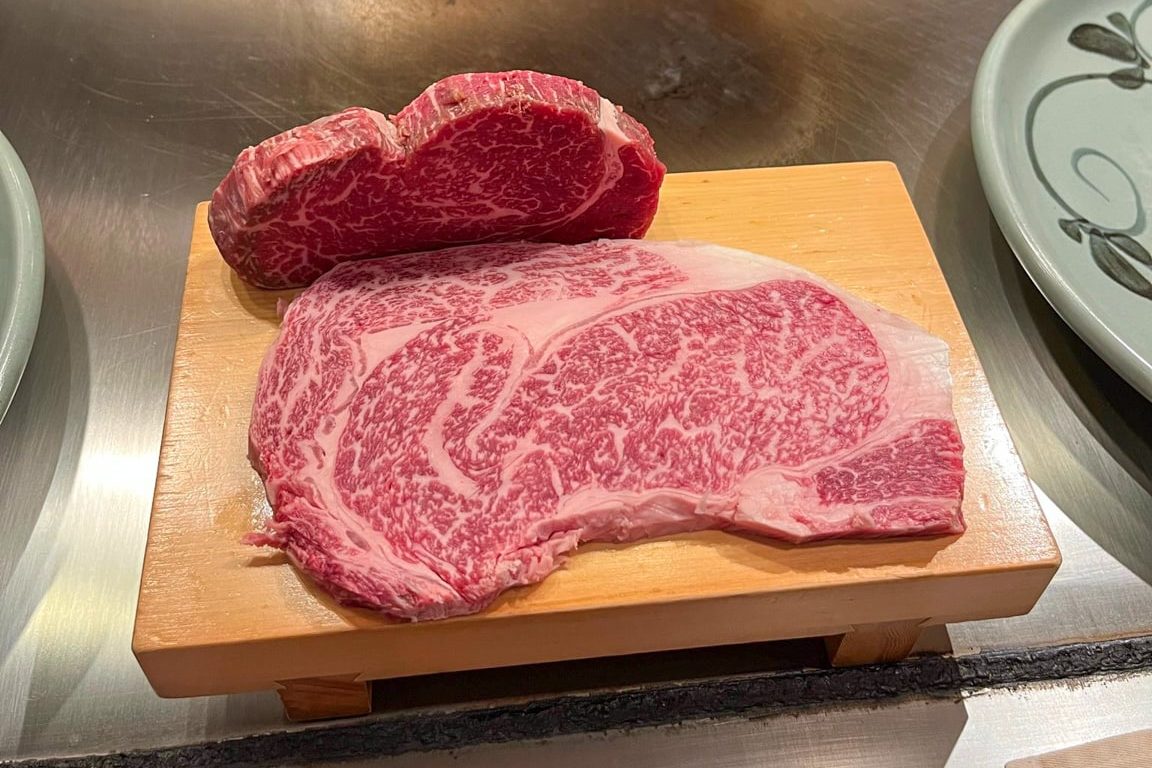
Have Japanese wagyu at a restaurant known for these dishes and you’ll understand why it is a national treasure with the way it practically melts right in your mouth.
Yakitori
If you like skewers of meat, you’ll enjoy yakitori. While yakitori specifically refers to charcoal-grilled chicken, kushiyaki is the blanket term for all meat on sticks.
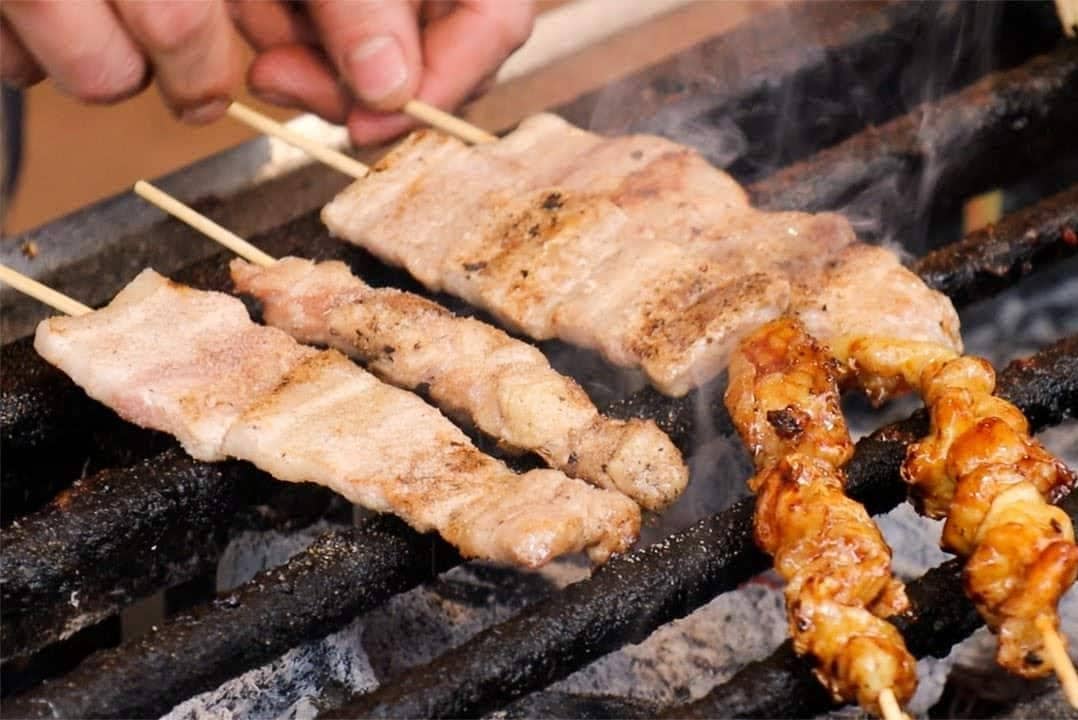
Regardless of what you try, the meats are seasoned with tare sauce, and go down very smoothly with a nice cold pint of beer.
Takoyaki
Maybe you shouldn’t ask what’s in takoyaki first, and simply pop one in your mouth. This favourite food from Osaka is a ball-shaped snack of octopus, scraps of tempura, green onions, and pickled ginger in a wheat flour batter.
The finishing touch is a savoury yet sweet sauce on top and bonito flakes, which are a whole story on their own.
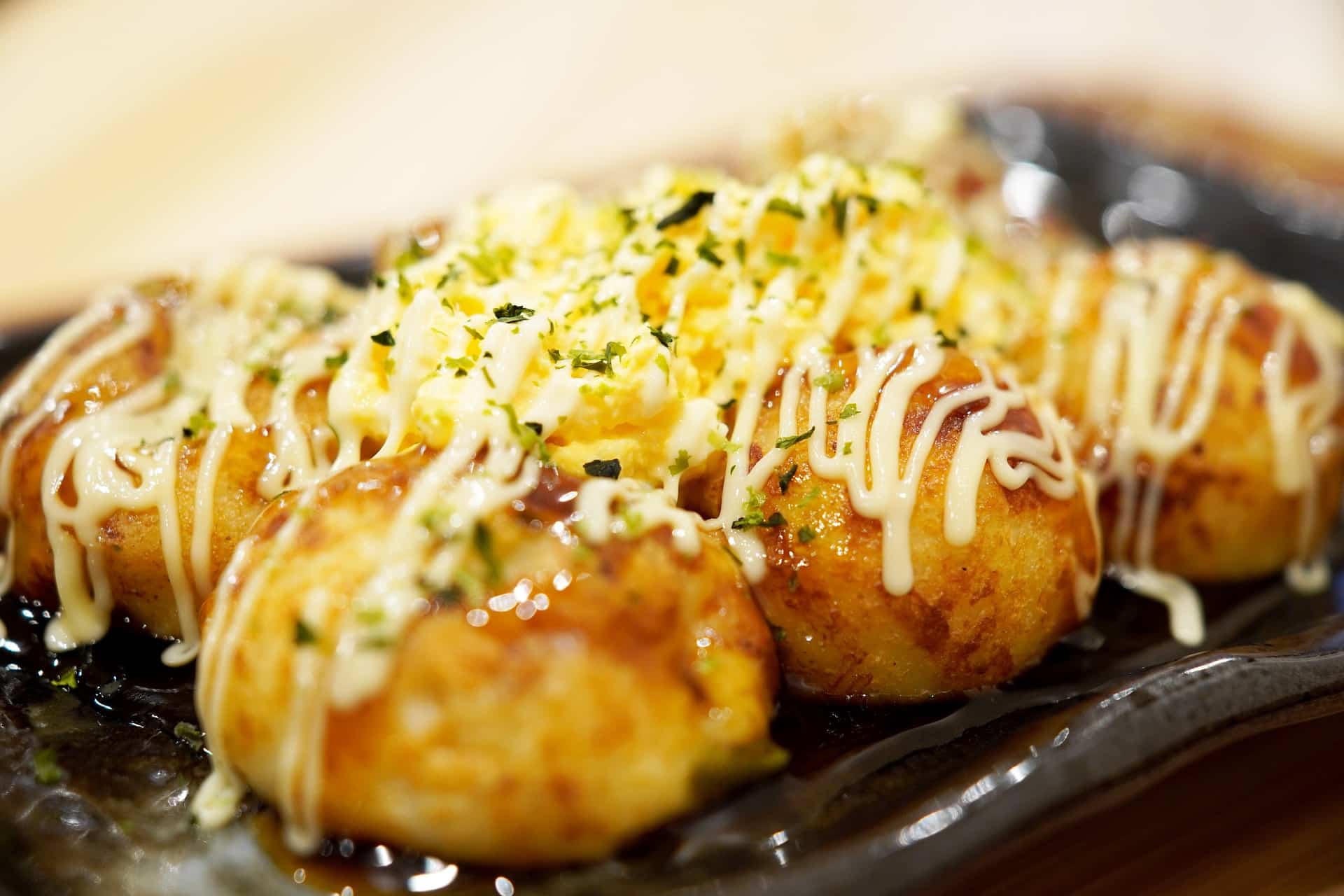
It’s absolutely delicious and delightful, a fantastic snack to enjoy while taking in the sights.
Okonomiyaki
Using batter a different way, okonomiyaki is a pancake made with a mixture of eggs, flour, dashi, and cabbage. Depending on the type, it may have vegetables, pork belly, or seafood in it.
This pancake is pan fried on both sides and then topped with a sweet and savoury brown sauce along with dried seaweed, fish flakes, and Japanese mayo.
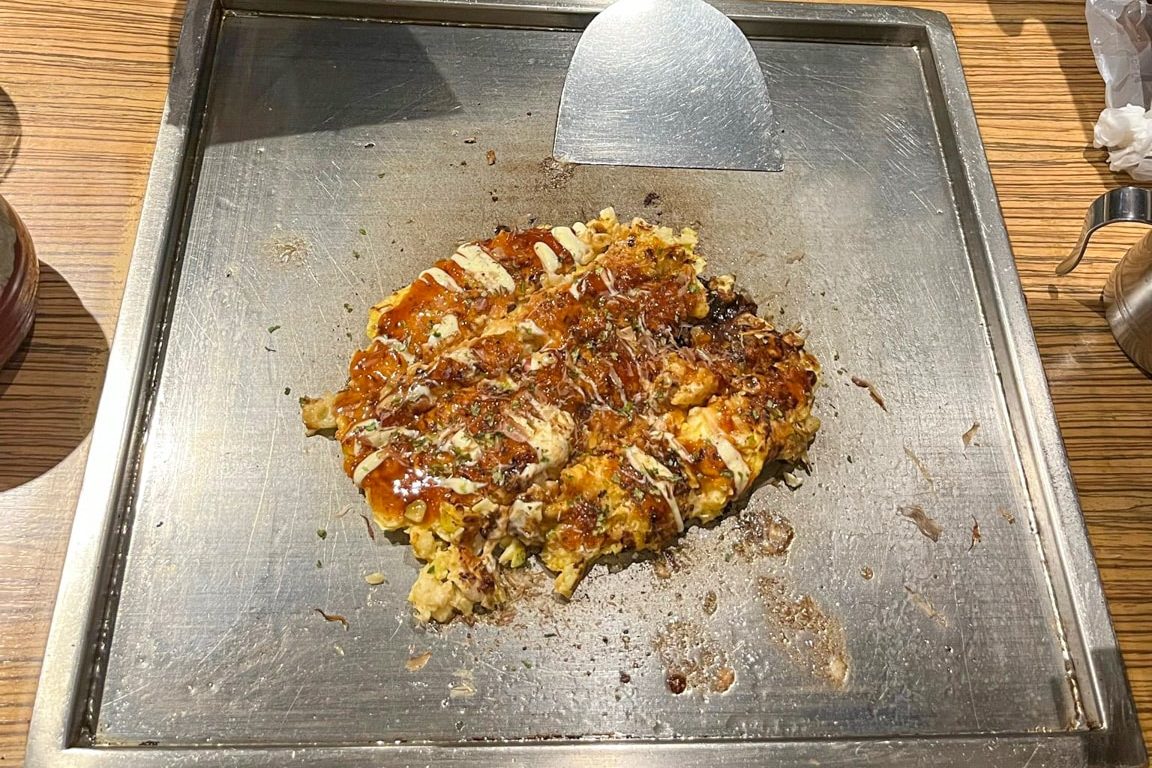
You’ll find them throughout your travels across Japan, though in different places, the ingredients will vary.
For example, in Osaka, the fillings are put into the batter before being cooked, while in Hiroshima, they’re layered one at a time.
Miso Soup
Most of the time, you’ll find miso soup flanking your meals in Japan. This traditional soup is very simple, made with miso paste and dashi along with a variety of other items.
You may see it with tofu and vegetables, or even with deep-fried pouches of tofu called aburaage. It’s also prepared with fish and seafood in some cases.
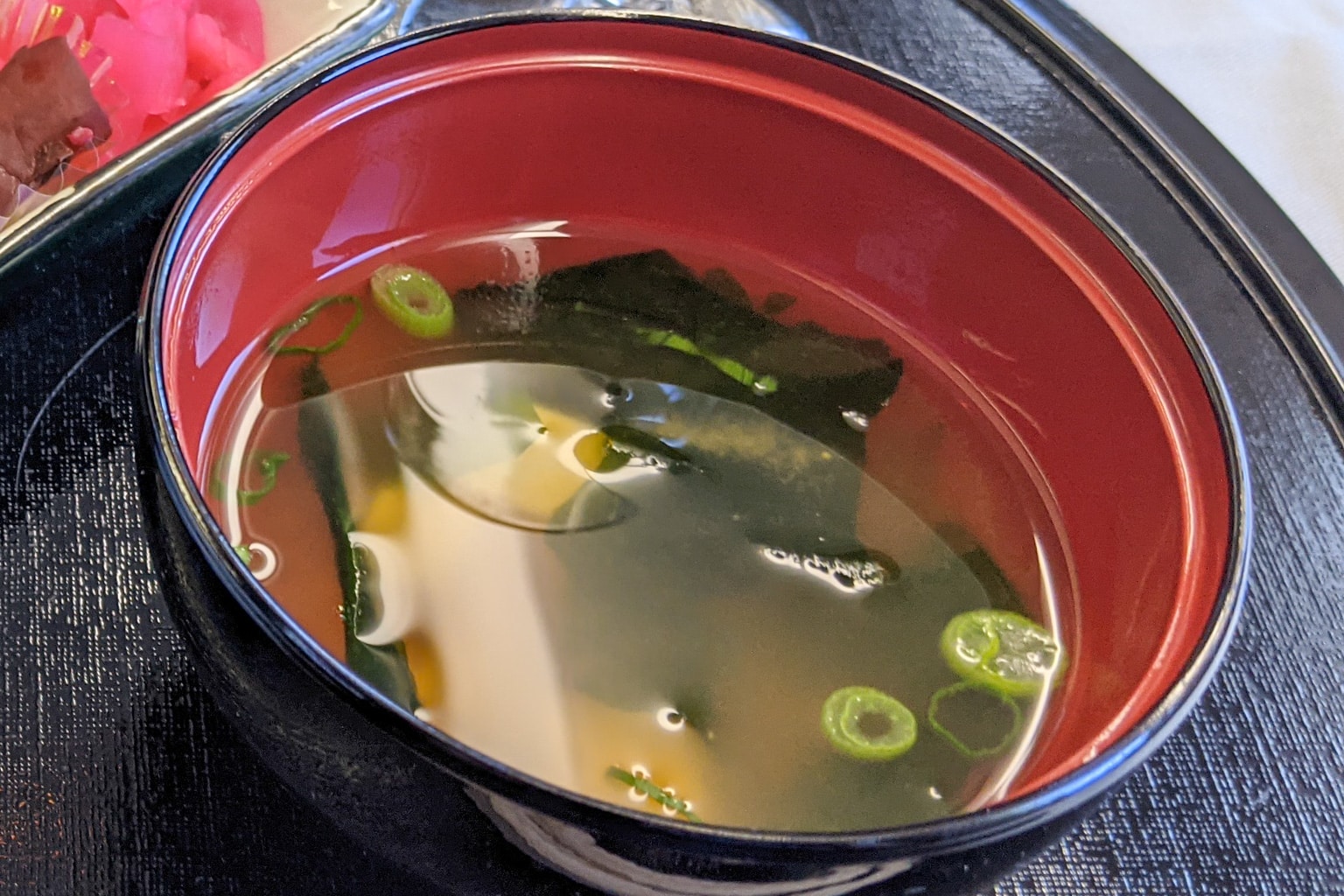
This healthy soup is sometimes eaten at the end of a meal, and can be consumed for breakfast, lunch, and dinner. Regardless of when you want to eat it, try it with one of your meals in Japan for a nourishing addition.
Kaisendon
The Japanese word for seafood is kaisen, and rice bowls are known as donburi. Combine the two, and you have kaisendon, or seafood rice bowl.
Quite simply, these are bowls filled with raw fish and seafood sashimi on top of white rice. It looks similar to chirashizushi, but that one is on vinegared rice while kaisendon is plain, steamed rice.
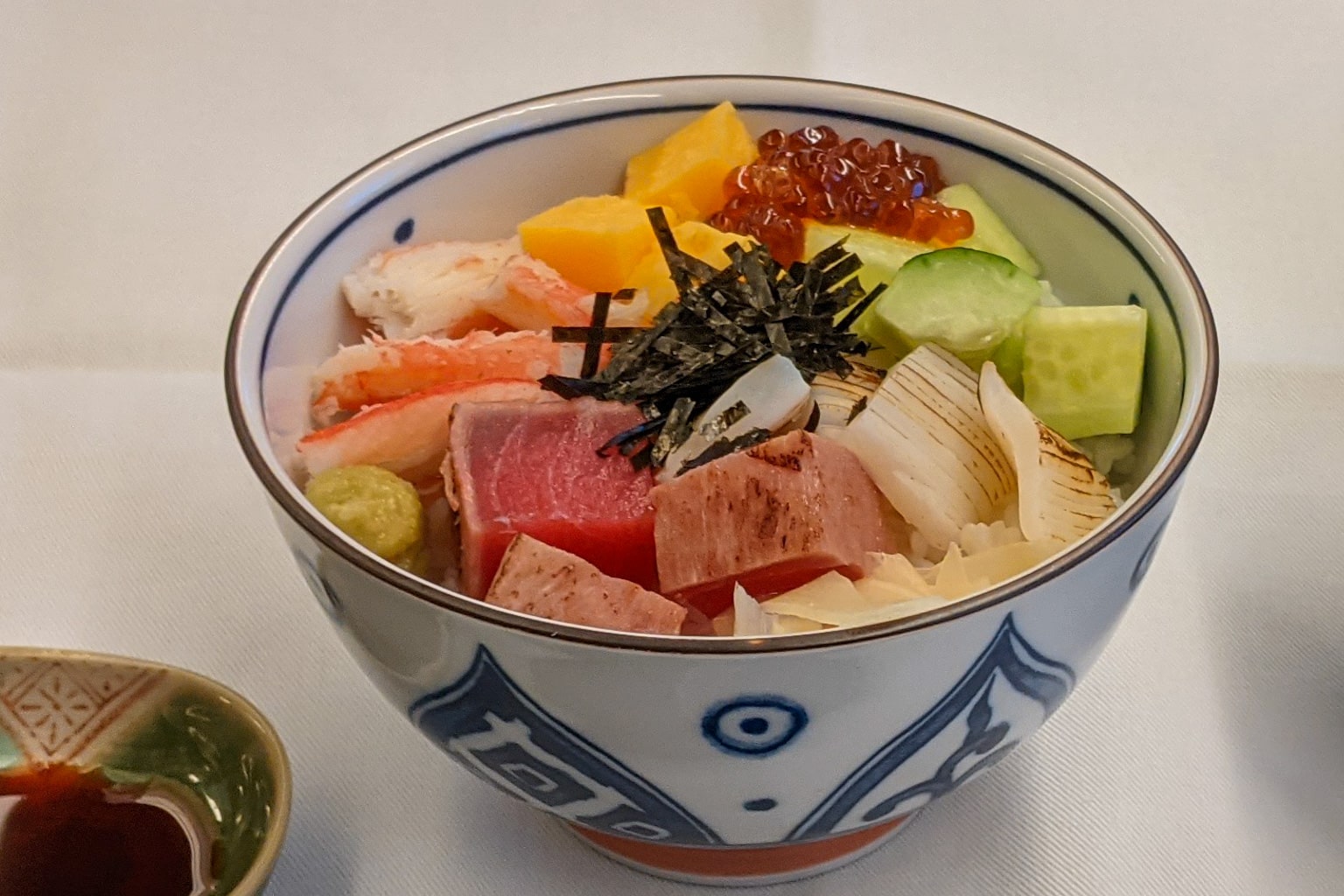
The fish markets are a great place to get a taste of this.
Anago Meshi
Anago meshi is a dish that utilizes eel, but not the same eel as unagi. Anago meshi is made with conger eel, which is softer in texture.
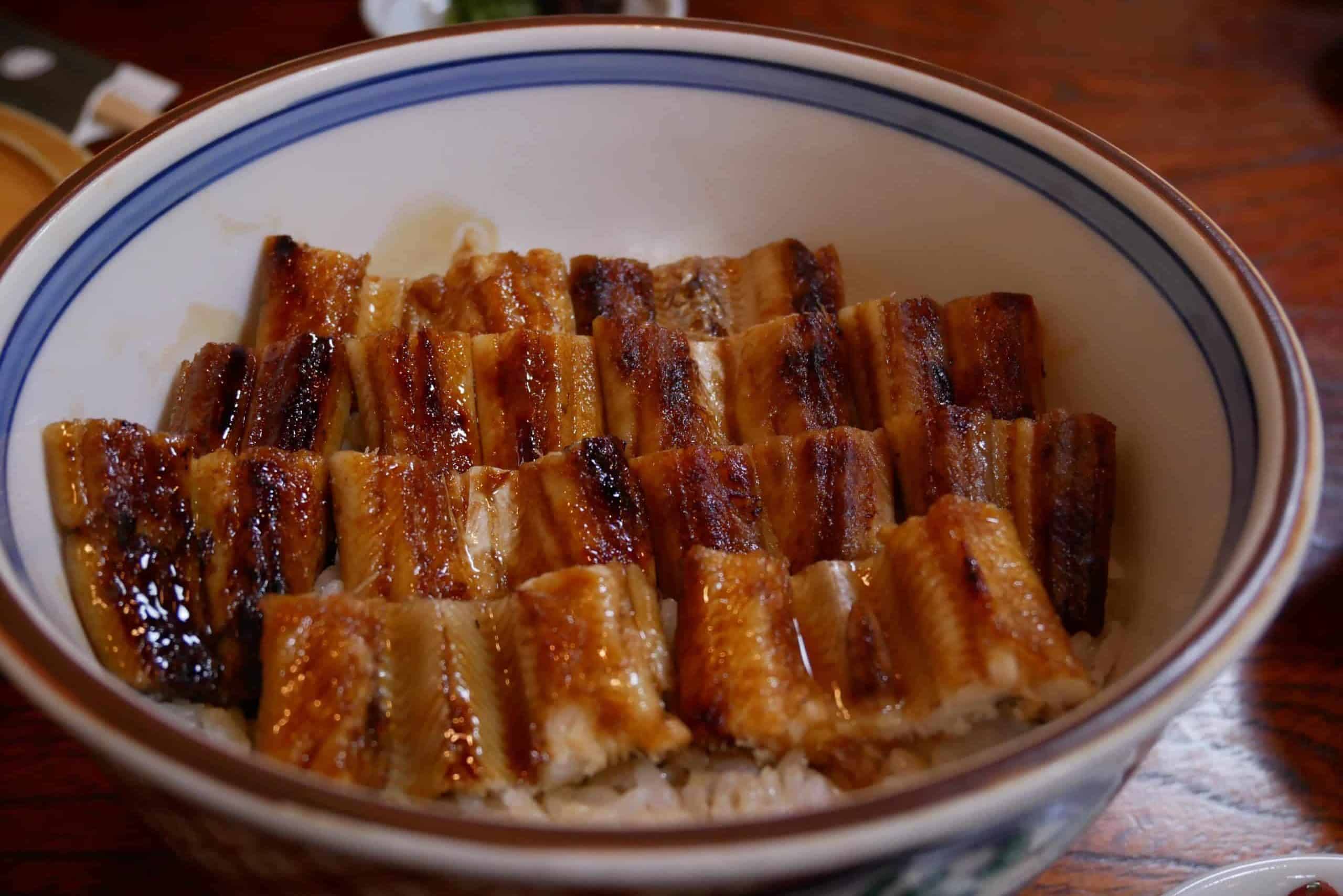
The glaze used on it isn’t as sweet as the one used to make unagi. Subtle and less oily, it’s a good one to try if you enjoyed tasting unagi at a sushi joint.
Bento Box
The bento box is a gift to everyone, and is the perfect meal for lunch, especially when you can’t seem to decide on what to order.
In Japan, there are hundreds of varieties of these which are a single portion of takeout, prepackaged, or restaurant order meals. It focuses on balance, and you’ll have a nice mix of rice, meat or fish, and vegetables.
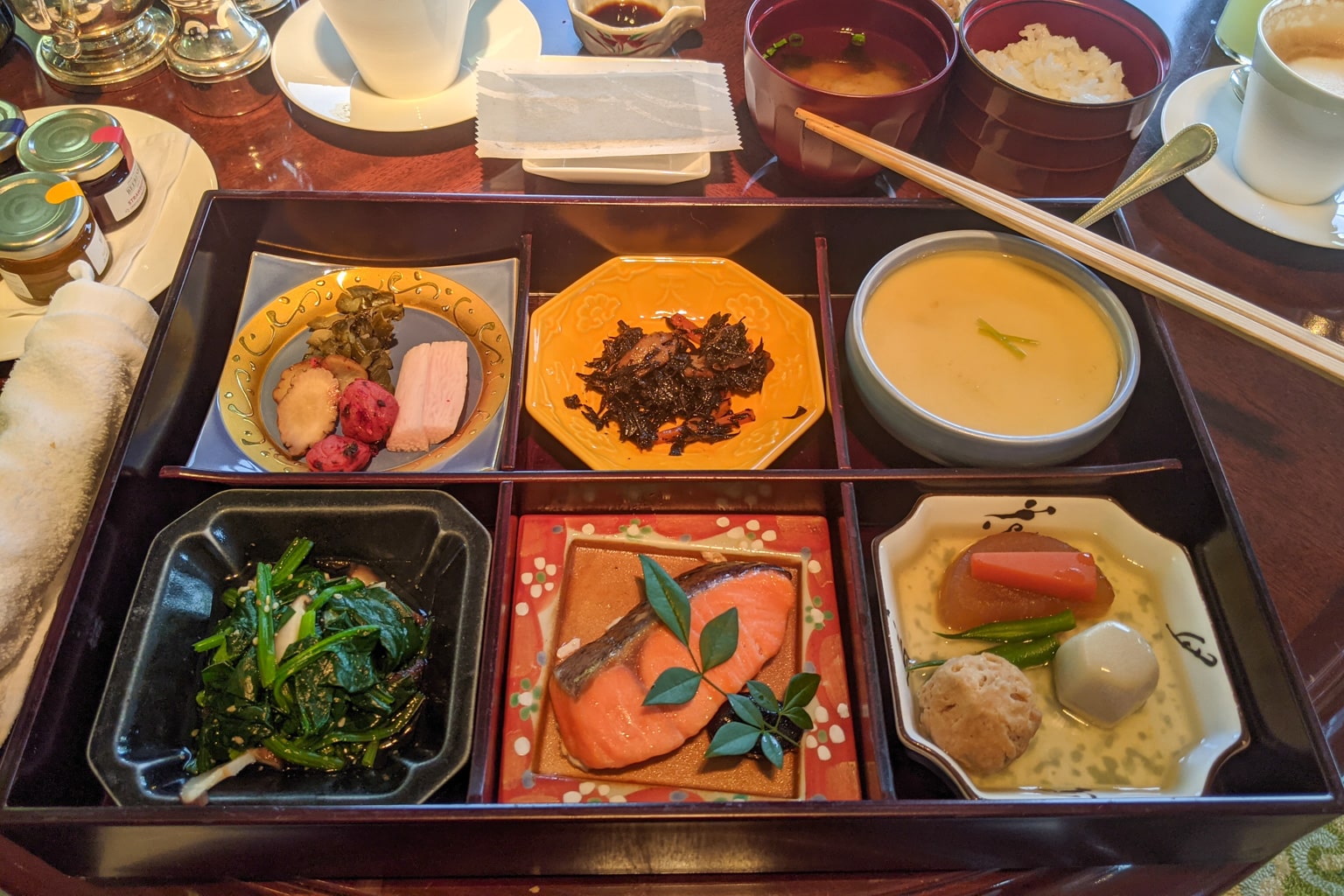
They’re convenient on the go but in a restaurant, you’ll find they combine several dishes and serve them in the most beautiful of ways. So, if you can’t decide between the sushi and tempura for example, a bento box allows you to have the best of both worlds.
Oden
Oden is a hot pot dish that comes with vegetables, fish cakes, sausages, tofu, daikon radish, and a few other things. It may or may not be your cup of tea, but it is a huge part of Japanese food culture, so give it a try.
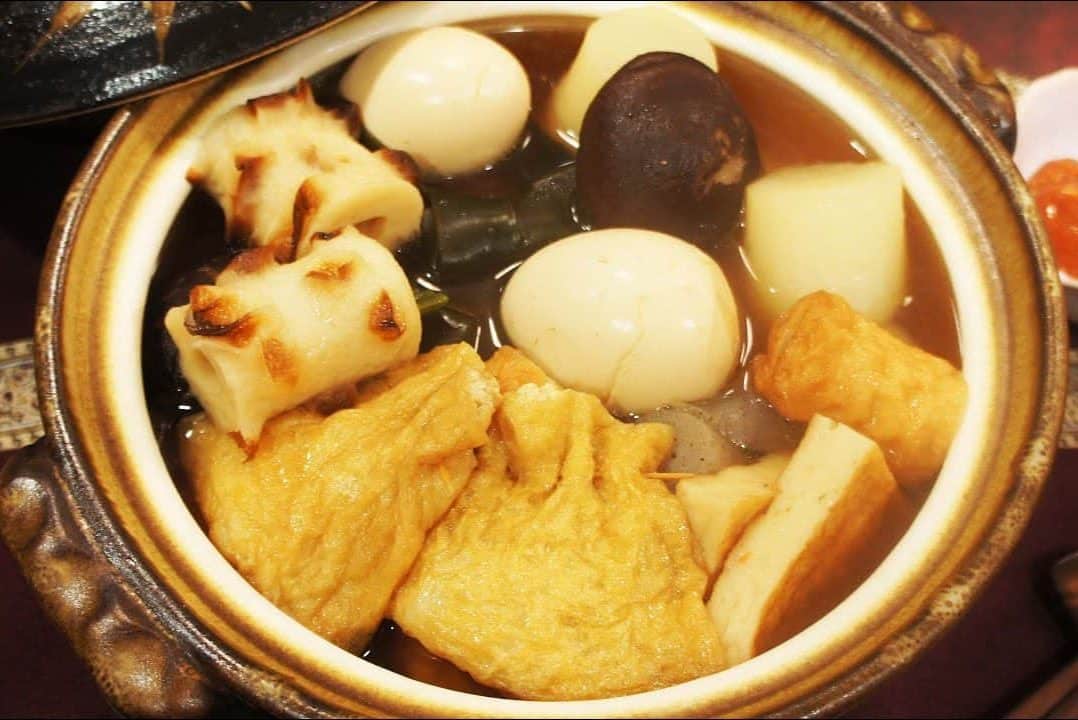
This hot pot dish varies by region, but will typically consist of an array of different foods stewed in a light broth.
Gyoza
Gyoza may be one of Japan’s more familiar dishes, and are often simply called Japanese dumplings. However, the style is very different from Chinese or Korean dumplings.
Gyozas feature ground pork, garlic, ginger, chives, and sesame oil in a thin sheet of dough. Typically, you’ll find them pan fried, though they can be served steamed or even deep fried.
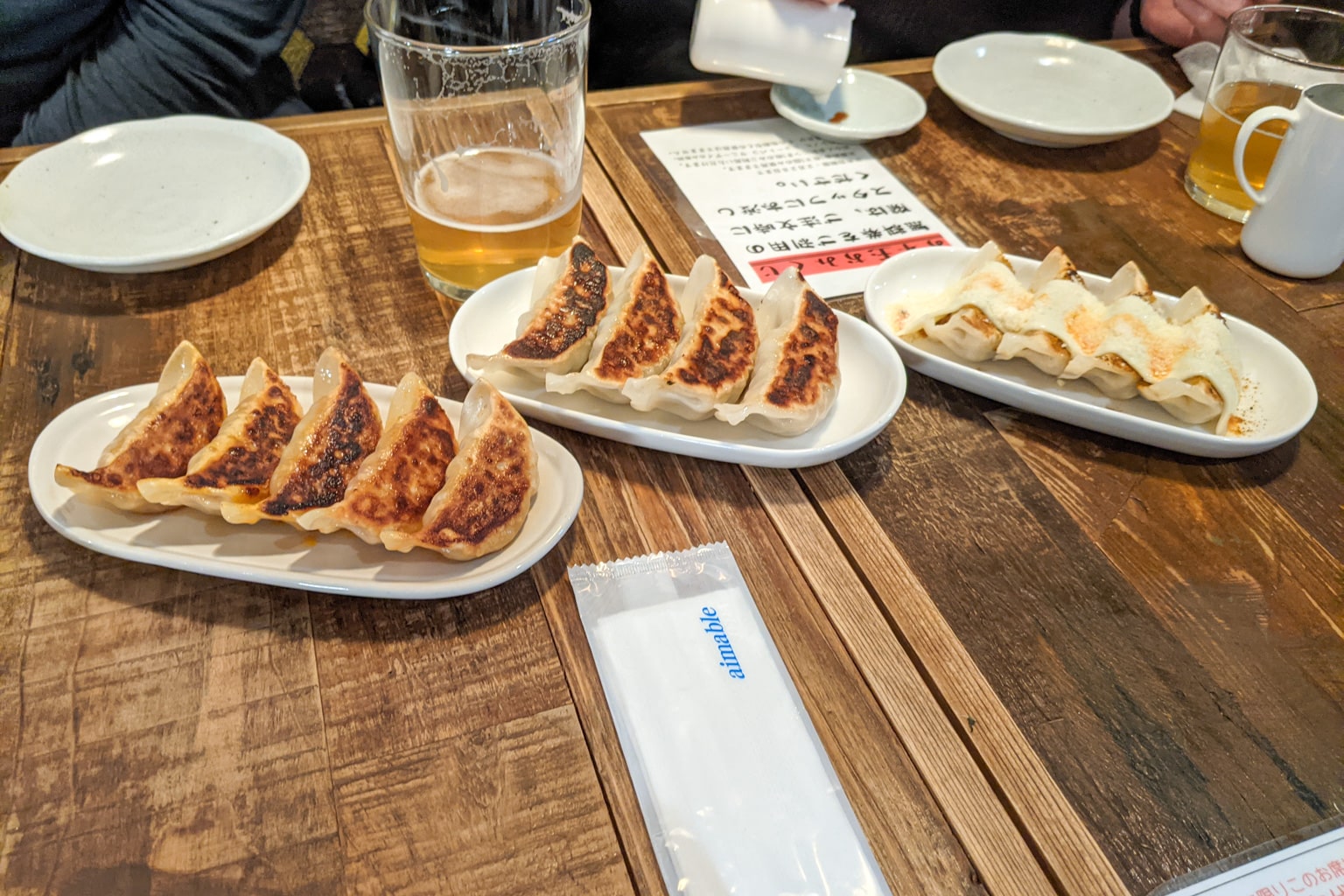
They make an excellent side dish to a bowl of ramen.
If you keep your eyes peeled, you may even find a vending machine offering hot gyoza on the side of the street.
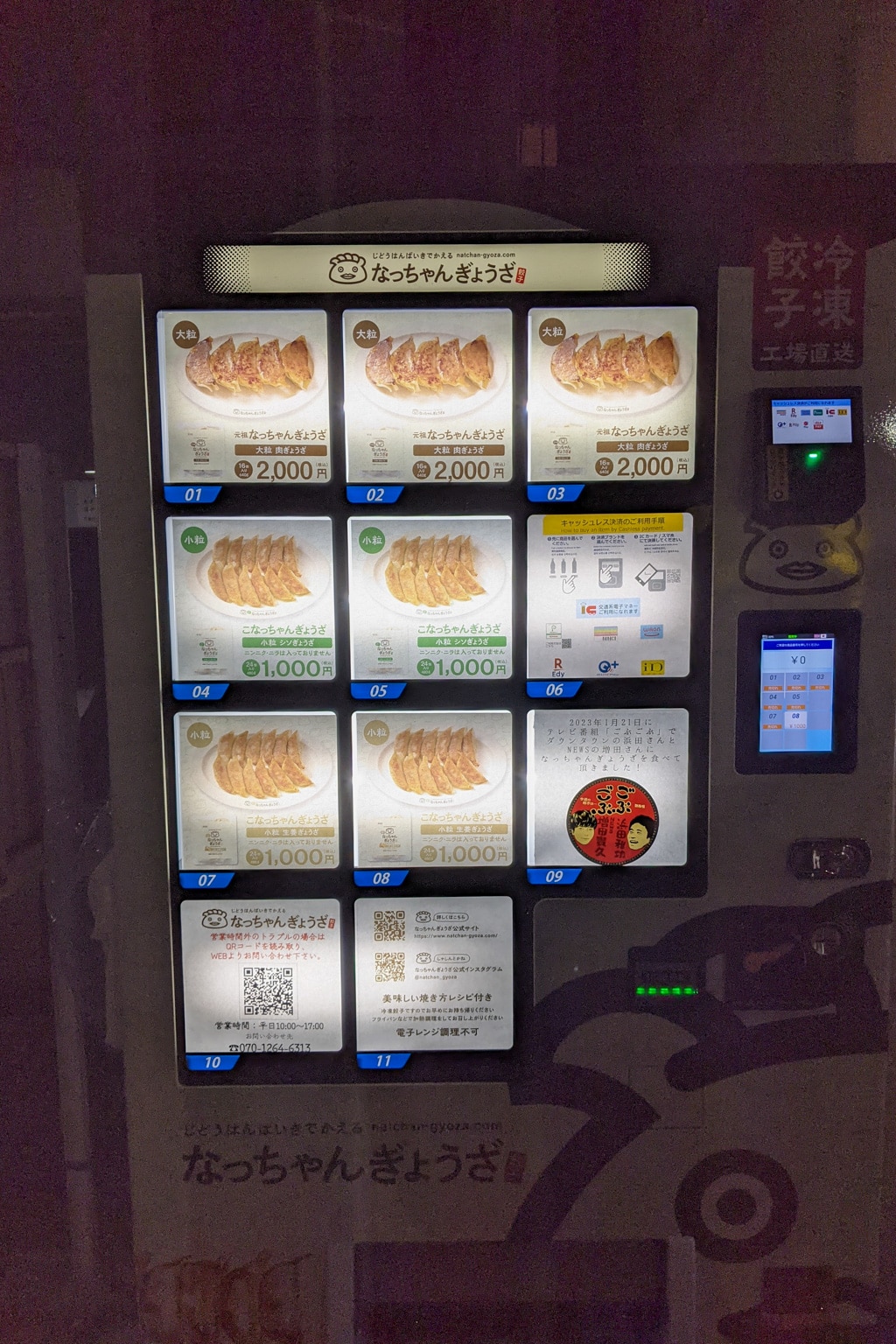
Karaage
This Japanese cooking method requires deep frying meat, seafood, or poultry. Chicken is the most common for this, and it comes out similar to tempura with one crucial difference.
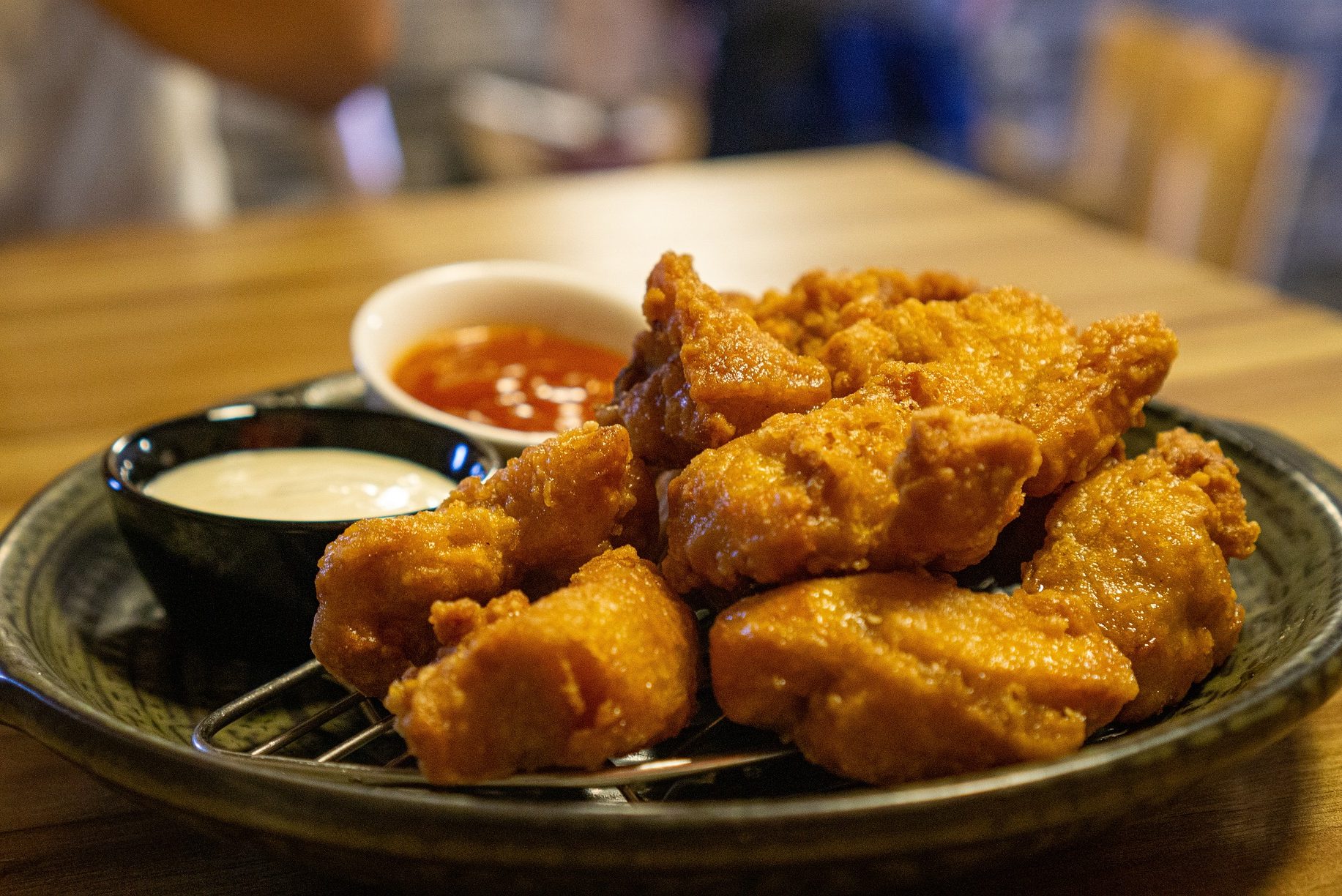
The meats are marinated before they’re coated in batter, which results in a heavier batter than the tempura batter. It’s crunchy and absolutely amazing!
Japanese Curry
Japanese curry is very different from any other curry. It was introduced to the country when the British came during the Meiji period; however, this didn’t really become a thing until the late 1960s.
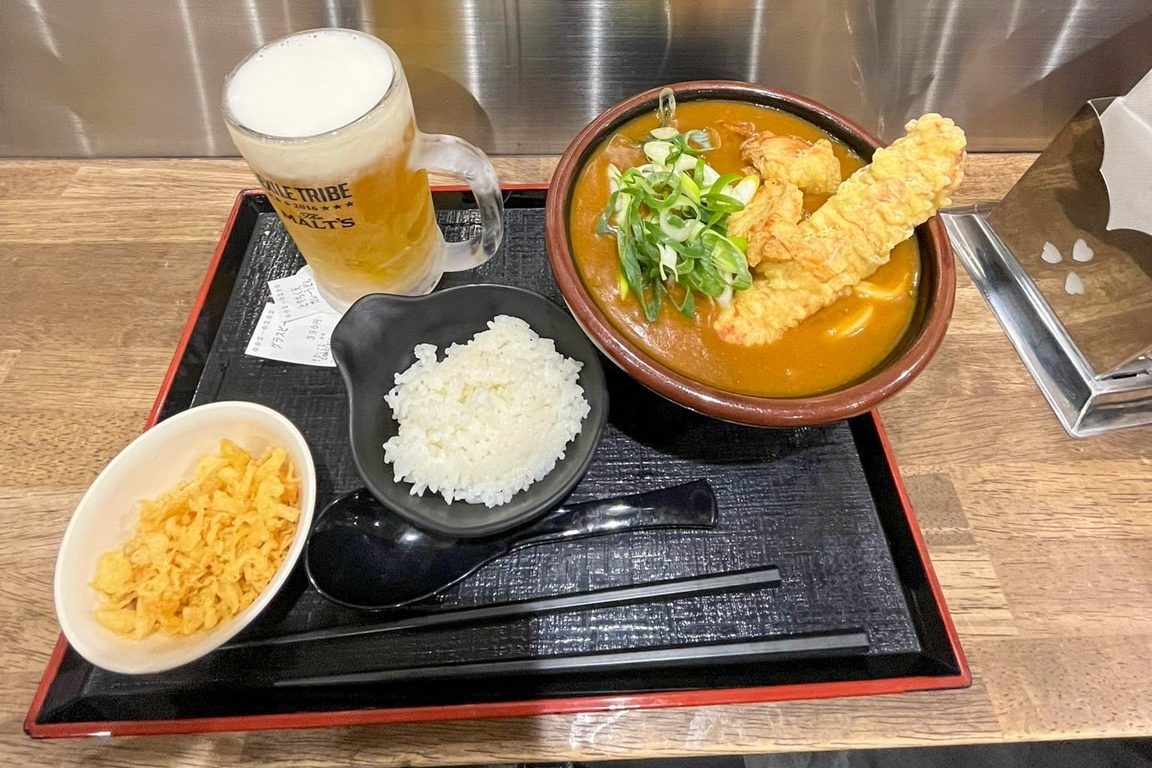
Japan’s curry rice is now considered a national dish. The curry can be found served on rice, over udon noodles, and even inside pastries. It features meat along with carrots, onions, and potatoes, and is particularly satisfying on a cold day.
Yakiniku
Another grilled meat to know and love in Japan is something you’ll make yourself. Yakiniku is an interactive dining experience in which you can order a variety of raw, marinated, sliced meats to your table, and then cook them over the flame to your desired level of doneness.
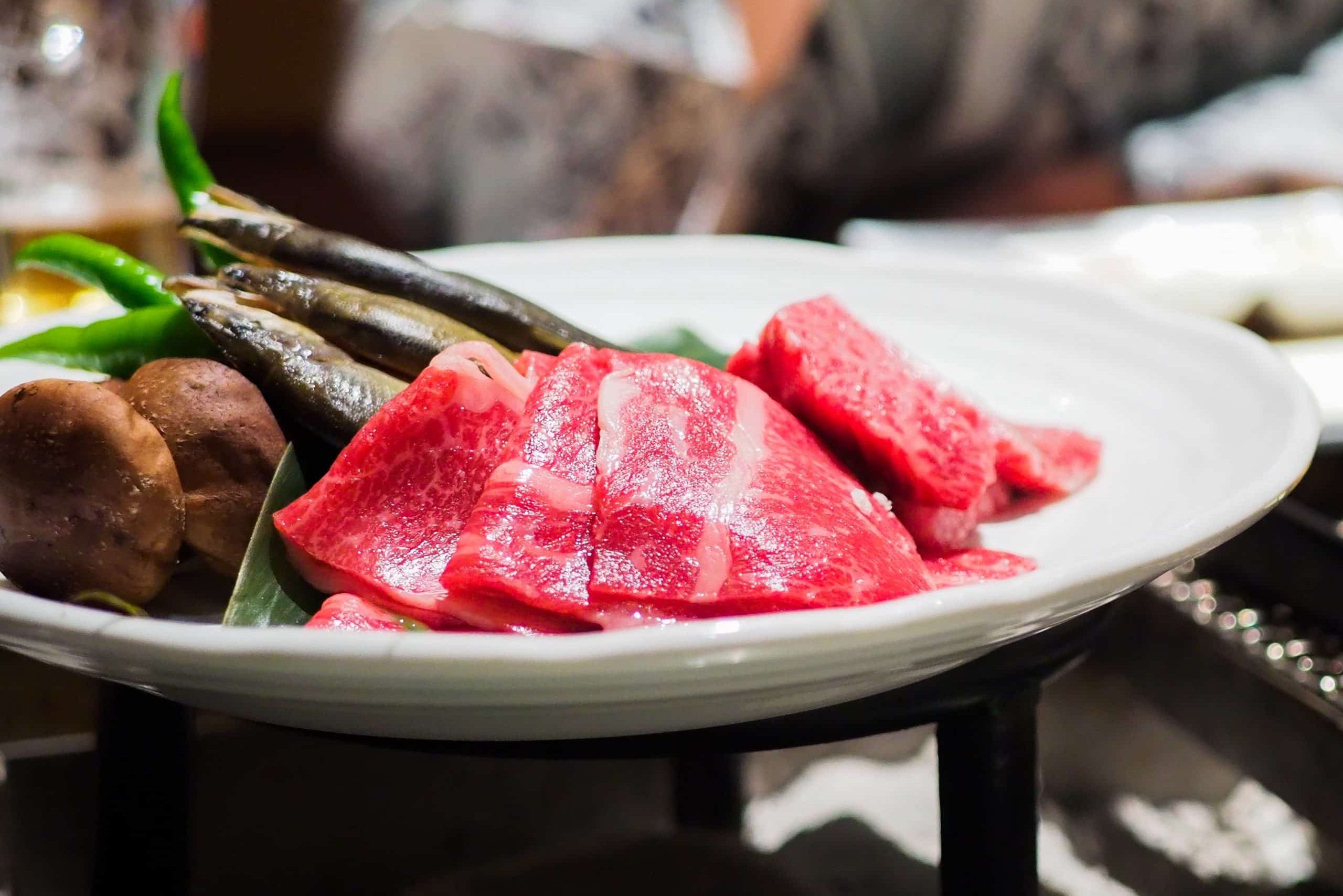
This is a great way to share Japanese food with your friends, and the fact that you’re doing all the hard work won’t take away from the experience.
Shabu-Shabu
While oden is a hot pot of items that you order individually, shabu-shabu is a different kind of hot pot, one that is firmly entrenched in Japanese culture. You cook this yourself at your table, just like yakiniku; however, instead of grilling, you boil the food.
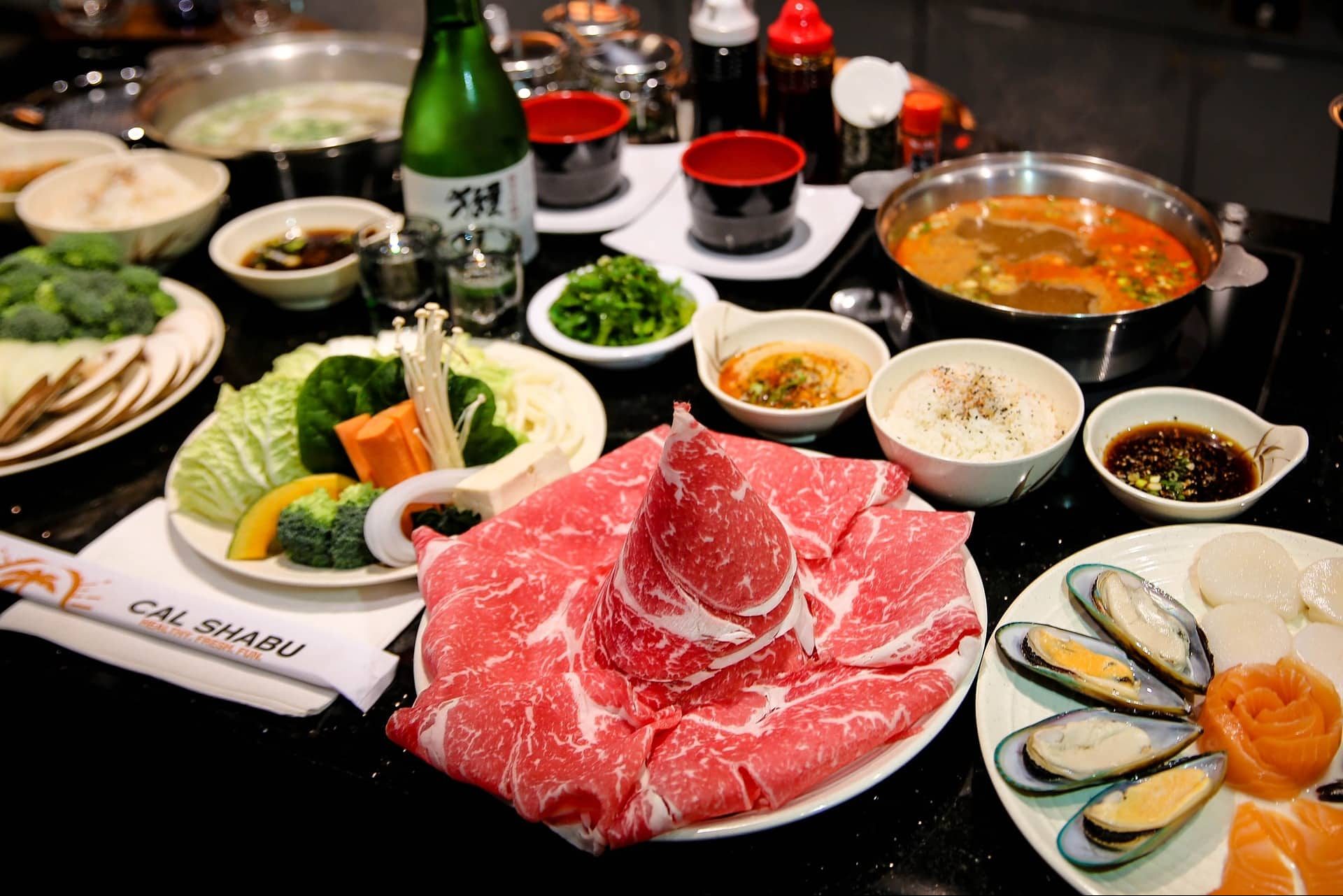
You’ll get a platter with vegetables, seafood, and thin slices of meat along with dipping sauces, spices, and garnishes. It’s fun to play with the flavours while taking the time to enjoy dining with others.
Japanese Street Food
Wherever you go in Japan, you’re bound to find markets. It’s essential to visit them, though what you taste is entirely up to what is available and your level of daring when it comes to cuisine.
You’ll find things as tame as grilled meats, like yakitori, or deep-fried pastries. You’ll also find some more adventurous options out there like grilled squid.
Give it a try and see why these foods are so popular. You may just find a new favourite food!
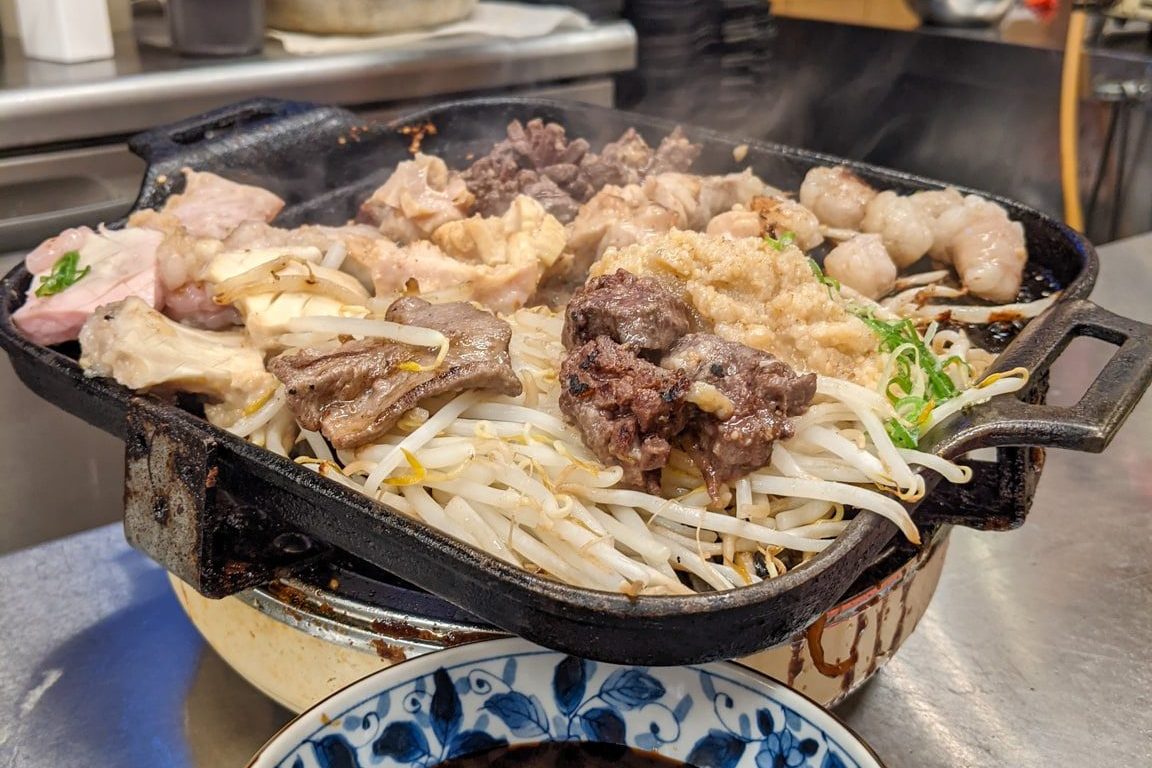
Keep in mind that in Japan, it’s considered rude to eat as you walk. When you buy food from a market or at a street vendor stall, it’s expected you’ll find a place to sit down and eat.
This certainly makes sense, considering how the Japanese take such time in presenting foods.
Even if you pick up a bento box from a convenience store, make sure you find a place to sit down before you take a bite. There are usually designated eating areas, though a park bench would suffice.
As you may have guessed, it’s also frowned upon to eat on public transportation and local trains. But if you’re taking a long distance train, eating food is permitted.
Tonkatsu
And finally, while there are plenty of foods in Japan that you’ll want to try, tonkatsu needs to be on that list. It’s a pork cutlet that is breaded and deep fried, much like a schnitzel.
You’ll also see variations of this dish with chicken, ham, beef, and ground beef.

Once it’s prepared, tonkatsu is sliced and served with a special sauce made from mustard and Worcestershire. Katsudon is a version of tonkatsu served over a bowl of rice.
You can also enjoy katsu kare where the Japanese curry is combined with tonkatsu for a very satisfying meal.
There are also sandwiches with tonkatsu called katsu sando. If you’re craving a sandwich, this is the way to go.
You won’t see these in restaurants, though, so plan on grabbing one when you’re passing a kiosk or in the railway stations.
Conclusion
Ultimately, Japan presents one of the world’s most wonderful array of flavours. Not everything here is raw, though sushi and sashimi items will almost always be that way (with the exception of unagi and a few other menu items).
No matter what you order, it will be presented with pride. Even the things you get in the street food stalls will have a presentation that shows care was put into the creation of your meal.
Those little things really make all the difference in helping you remember to take the time, slow down, and enjoy every little bite.




















What a great article! I would love to visit Japan one day and experience all these foods (except for the ones involving horse and/or whale). It is a fascinating culture, and I love the Japanese food I have tried so far (in North America). Thank you for the visuals too! Great pics!
I was very turned off Japanese cuisine after seeing a CBC story of live horses being sent to Japan for sushi. Yes, horse meat sushi! Add the fact that Japan still hunts whales… Nope. Nope. Nope.